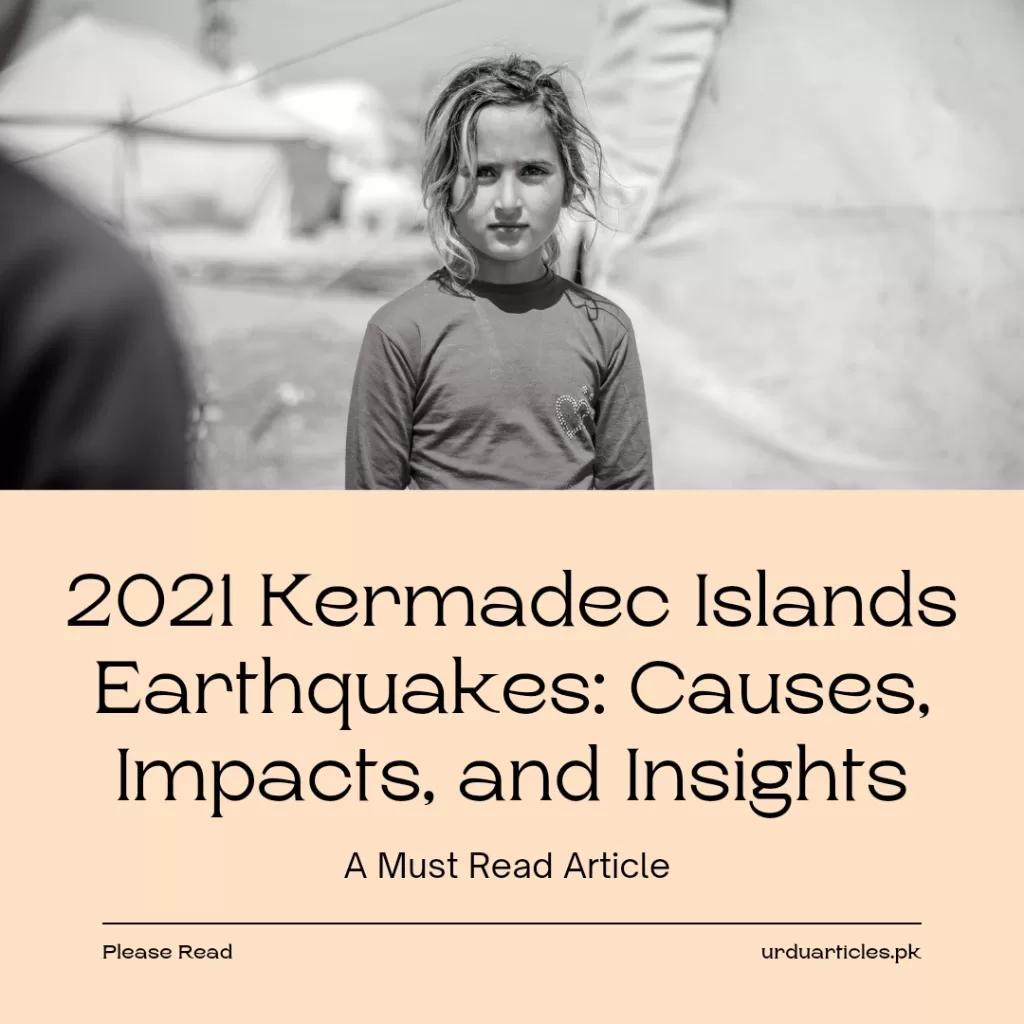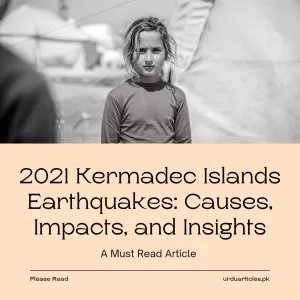2021 Kermadec Islands Earthquakes: Causes, Impacts, and Insights
2021 Kermadec Islands Earthquakes
Introduction:
On the 4th and 5th of March 2021, a series of powerful earthquakes hit the Kermadec Islands region, located in the South Pacific Ocean. These quakes caused significant concern and received widespread media attention, prompting many people to wonder about the causes of these seismic events, their impacts, and potential insights they offer to researchers and policymakers. In this blog post, we will explore the 2021 Kermadec Islands earthquakes in detail.
Causes of the Kermadec Islands Earthquakes:
The Kermadec Islands are located on the boundary of two tectonic plates – the Pacific Plate and the Australian Plate. These plates move in opposite directions, with the Pacific Plate moving westward and the Australian Plate moving eastward. As they move, they collide and create tension along the boundary, resulting in earthquakes and volcanic activity. The 2021 Kermadec Islands earthquakes were caused by the subduction of the Pacific Plate under the Australian Plate, resulting in a magnitude 7.4 earthquake followed by a series of aftershocks, including a magnitude 8.1 earthquake.
Impacts of the Kermadec Islands Earthquakes:
The 2021 Kermadec Islands earthquakes caused several impacts, both immediate and long-term. These impacts include:
Tsunami: The earthquakes triggered a tsunami that reached several coastal areas, including New Zealand, Fiji, and Tonga. While the tsunami did not cause significant damage, it did cause some flooding and forced many people to evacuate their homes.
Infrastructure Damage: The earthquakes caused significant damage to infrastructure, including power lines, roads, and buildings, particularly on the Kermadec Islands. The New Zealand government has estimated that the cost of repairing the damage will be in the millions of dollars.
Environmental Impacts: The earthquakes also had environmental impacts, including the formation of a large pumice raft in the ocean. This raft, which is made up of volcanic rocks, has been estimated to be over 150 square kilometers in size and is expected to drift across the ocean, potentially impacting marine life.
Insights from the Kermadec Islands Earthquakes:
The 2021 Kermadec Islands earthquakes provide researchers and policymakers with valuable insights into earthquake and tsunami risks, as well as the need for preparedness measures. These insights include:
The Importance of Early Warning Systems: The earthquakes demonstrated the importance of early warning systems for earthquakes and tsunamis, as they provided critical information to people in affected areas, allowing them to take necessary precautions.
The Need for Preparedness Measures: The earthquakes highlighted the need for preparedness measures, including the development of emergency response plans, the stockpiling of supplies, and the creation of evacuation routes.
The Potential for Future Seismic Events: The earthquakes serve as a reminder that the Kermadec Islands region is a high-risk area for seismic activity, and there is a need for ongoing research into the risks and potential impacts of future earthquakes and tsunamis.
Conclusion:
The 2021 Kermadec Islands earthquakes were a powerful reminder of the ongoing risks posed by seismic activity in high-risk areas. While the earthquakes caused significant impacts, they also provided valuable insights into the need for preparedness measures and the importance of early warning systems. As researchers and policymakers continue to study the impacts of these seismic events, they will be better equipped.
In conclusion, the 2021 Kermadec Islands earthquakes were a powerful and significant event that caused a range of impacts in the region. The initial 8.1 magnitude earthquake and subsequent aftershocks triggered tsunami warnings and evacuations in New Zealand, and caused damage to infrastructure on the Kermadec Islands themselves. The causes of the earthquakes are linked to the collision of tectonic plates in the region, which generate large amounts of seismic energy that can be released suddenly in the form of earthquakes. While these events are a natural occurrence in this part of the world, they serve as a reminder of the ongoing risks associated with living in areas prone to earthquakes and other geological hazards.
You May Also Like These Below Mentioned Articles Also 🙂
- World Down Syndrome Day
- Small Investment Business Ideas: A Guide to Success
- Top 5 Ways to Make Money Online
- SpaceX Launches First All-Civilian Crew Into Orbit
- Digital Marketing Strategy an Integrated Approach to Online Marketing

Through my words, I Strive to evoke emotions, challenge Norms, and inspire change. Whether it’s delving into the complexities of human relationships, shedding light on social issues, or celebrating the beauty of our cultural heritage, I aim to create a lasting impact. With every word, I weave together stories that resonate with audiences, sparking conversations and fostering a sense of unity. Being a Pakistani content writer is not just a profession; it’s a responsibility to uplift and empower through the power of storytelling.


